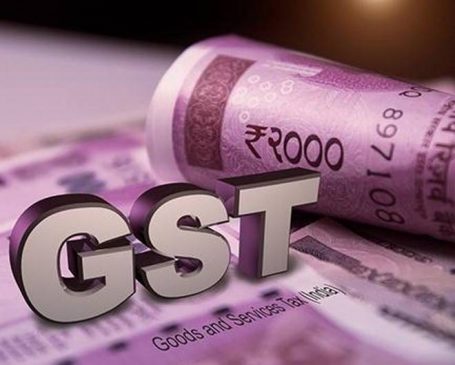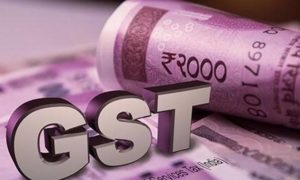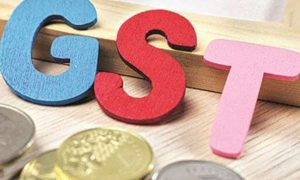Even as the GST Council has referred the service tax on card transactions to the fitment committee, a favourable decision is likely to boost the UPI payments.
Several payment aggregators (PAs) said that they would pass on the 18 percent GST to merchants. Most of them charge 1-3 percent commission on transactions from merchants. For a Rs 100 transaction, for example, if the PA charges Rs 2 as transaction commission, an 18 percent GST would mean an additional 36 paise charge for the merchant.
Read More:- Axis Bank now offers up to 7.75% FD interest rate on these tenures; check latest fixed deposit rates
To be sure, while small merchants might be paying 2 percent PA charges, most big merchants negotiate hard because of the huge volumes and mostly pay effective PA charges of 0.5 to 0.8 percent. While the big merchants can claim an input tax credit for the GST they pay to the payment aggregators, small merchants such as shopkeepers will likely dissuade customers from using cards.
“If merchants’ reluctance to pay MDR is any indication, the GST on card transaction services will prompt small merchants to dissuade customers from using cards. While it may seem like a small amount, at the end of the month, these charges will cumulatively will be fairly high,” says the founder of a payments firm, which focuses on UPI.
Also Read– Bank holiday: Will banks be closed for six days in a row from September 13-18? Check here
Merchants may shift cost to customers
Before demonetisation, there was an 18 percent service tax on all card transactions at merchants. After November 2016, the government lifted service tax on transactions below Rs 2,000 to promote digital payments.
Cards were the most popular digital payments in the country till then, but UPI took over from there. Most of the government incentives to promote digital payments go to UPI. This move will likely skew the payments landscape further towards UPI.
Also Read– Aadhaar Card Update: Free Service Ending On September 14. Follow This Step-By-Step Guide
While PAs pass on the cost to merchants, it is unlikely that they will not shift the cost to customers. For an online transaction on the merchant payment page, for instance, the customer is shown multiple payment options and the convenience fee or payment gateway charges will be specified for each method.
“This is going to dissuade a lot of customers who will likely see lower charges for UPI at the payment gateway and opt for it,” said the founder of the payment company quoted above.
Read More: How To Change Aadhaar Card Photo? Is Online Update Possible? Details Here
Credit card payments to stay
PA firms said that this will not change the merchant and customer behaviour much, especially since this is driven by the availability of credit as well as reward points. Since these customers tend to be relatively high spenders, most merchants will provide the option of card payments.
The average value of a credit card transaction is around Rs 4,500 and Rs 3,000 for debit cards. Compared to this, an average UPI merchant transaction is Rs 632. Interestingly, this indicates that consumers using card payments tend to do higher value transactions delivering better sales for merchants.
“Those who were accepting cards earlier will not have any qualms about paying 18 percent GST. It is a minuscule amount. They would be worried about demand and sales. For a transaction of Rs 1,000, paying Rs 3 as tax is not a big deal,” said the founder of a large PA firm.
Read More: IndiGo Offers Special ‘Add-ons Fiesta’ Plan On Flight Bookings For Festive Season
Another PA firm executive said that while transactions below Rs 2,000 were exempted, most card transactions were coming under the tax regime. The person added that debit cards are dying and this will accelerate their slow demise as lower MDR and lack of GST were incentives for merchants to accept debit cards.
“For most PAs, the transactions below Rs 2,000 were not a major revenue generator. So, even if customers and merchants shun these, the impact will be minimal,” the executive added.
Retrospective effect?
A senior bank executive said that a lack of clarification on the retrospective effect is a cause for concern. “If this is applied retrospectively, this will wipe out the profits of most PA firms, who are already working under razor-thin margins. A clarification on this is essential to avoid confusion,” the banker said.
Read More: PPF, Sukanya Samriddhi: 5 new rules for your small-savings account. Here’s what you need to know
One of the PA firm founders quoted above said that some tax departments have misinterpreted the existing rules but the guideline does not apply retrospectively.
“There is no way PAs can go back to the merchants and ask for GST since in most cases the goods and services would have been already delivered. They cannot ask for input tax credit as well,” said a fintech consultant with an audit firm.
Read More: SBI Asha Scholarship 2024 for 10,000 students: Check eligibility, apply by Oct 1
The person added that this will not have much of an impact in the future, as these low-ticket item demand will be mostly inelastic and hence the transactions and revenue from these will not likely go down.





































